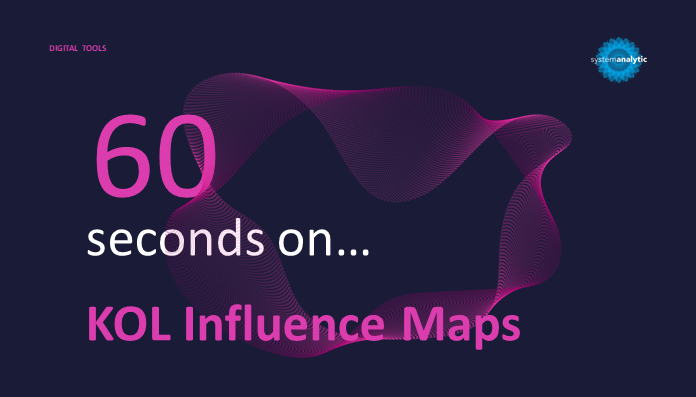KOL Influence Maps

Who influences whom? Who’s connected to whom? Who collaborates with whom? These are some of the most important questions that should be answered when creating your target list of KOLs to engage with and building an effective KOL engagement strategy.
Traditionally most KOL influence maps have been built by analysing publication or congress co-authorship within a therapy area. These can give you some excellent insights, but they don’t necessarily equate to ‘influence’. After all, just because two people are collaborating together via publications, doesn’t mean that they necessarily influence each other.
One way to approach this problem is to work backwards from the specific questions that you need to answer.
For example, a simple question such as ‘who is a particular KOL collaborating/working with, in what capacity, and how has that evolved over time’ can all be answered by the analytics described above. The insights gathered from this process will be most useful when profiling a KOL and deciding on the tactical elements of an engagement plan, but they will not help you in identifying and mapping the right people that you should be engaging with in the first place.
A more complex question might be related to true influence e.g. which KOLs impact the thinking of frontline physicians in specific topics that are important to your medical or commercial strategy? Trying to address this problem through traditional co-authorship analytics is a waste of resources. Answering such a question requires a multi-model approach that takes many research inputs into account, including the viewpoints of the target physicians, and then works backwards to identifying the truly influential KOLs.
Moving away from the individual, another question that can help you assign your resources most effectively while building your KOL engagement strategy involves identifying the 20% of individuals within a disease community that are most likely to impact the behaviour of the remaining 80% of the group. To create this type of community influence map requires not just an analysis of connectivity between individuals, but also the reach of an individual within a predefined group of KOLs.
This key theme that no single visual ‘influence map’ can answer all of the different questions is one that we have embraced in our KOL mapping programmes and our Firefly KOL database – each question is driven by its own research requirements, and each requires its own set of inputs to generate the relevant insights. And it all starts with the questions that you need answering.
Lisa Chandler
Managing Director
+44 (0) 7899 065111



